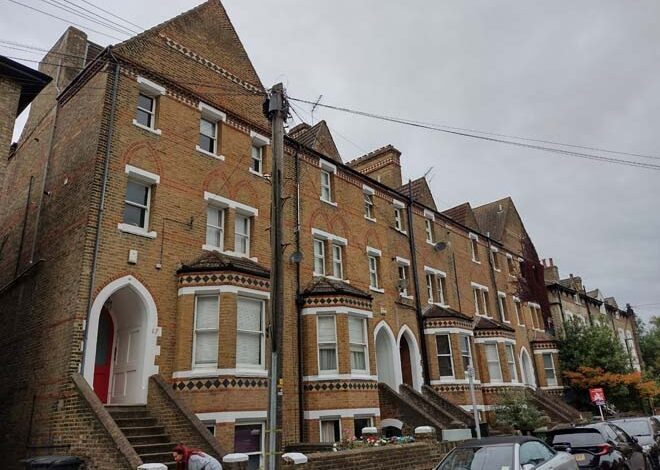How Conservation Zones Shape Property Choices in St Albans

Introduction
St Albans, with its rich history and picturesque architecture, stands as a testament to the past while embracing the future. This balance is significantly shaped by its conservation areas, which play a crucial role in maintaining the city’s charm and heritage. These designated zones are crucial for preserving the aesthetic and historical integrity of the region. However, they also come with certain regulations that impact property values and influence renovation plans. Understanding these effects is essential for homeowners, potential buyers, and estate agents in St Albans looking to navigate the property market successfully.
Understanding Conservation Areas
Conservation areas are designated zones that aim to safeguard places of historical or architectural interest. These areas are typically designated by local authorities to preserve the cultural heritage and unique character of neighbourhoods and villages. The primary purpose is to maintain the distinctive aesthetic of these regions, ensuring that any changes or developments are in harmony with the existing environment. By doing so, conservation areas help protect the charm and historical significance of a locality against inappropriate alterations that could detract from its original character.
Overview of St Albans’ Conservation Areas
St Albans, with its rich history and picturesque landscapes, is home to several conservation areas. Each area has been carefully identified for its historical significance and unique architectural features. Some notable conservation areas in St Albans include the St Albans Cathedral Quarter, the Verulamium district, and the St Michael’s Village. These areas reflect the city’s diverse history, from Roman antiquity to medieval architecture, and play a crucial role in preserving its cultural identity.
Legal and Regulatory Framework
The legal groundwork for conservation areas is provided by the Planning (Listed Buildings and Conservation Areas) Act 1990. This legislative framework empowers local authorities to designate conservation areas and implement specific restrictions on development and alterations. In St Albans, property owners within these areas may face additional regulations on renovations, requiring them to seek special permissions for modifications to their properties.
Impact on Property Value
Historical and Aesthetic Appeal
Properties situated in conservation areas often enjoy an enhanced market appeal due to their historical significance and visual allure. The charming facades, period features, and the quaint streets they sit upon often attract buyers who value aesthetics and character.
Market Trends in Conservation Areas
Trends in property market suggest that properties within conservation areas are more likely to retain or increase their value over time, even during broader market fluctuations. The demand for these properties can be attributed to their limited availability and the prestige associated with owning a home in a historically significant area. Buyers are often willing to pay a higher price for the peace of mind that comes with restrictions that preserve the neighbourhood’s charm and prevent unsightly developments.
Comparative Analysis with Non-Conservation Areas
When comparing property values and market behaviours in conservation areas to those in non-conservation areas, a noticeable difference emerges. Properties outside conservation zones may not always enjoy the same level of demand or price stability. This is partly because they lack the safeguards provided by conservation ordinances, which protect against unsympathetic alterations and new developments.
Renovation Challenges and Opportunities
Renovating a home in St Albans’ conservation areas presents both unique challenges and rich opportunities. These historic areas are subject to strict regulations that aim to protect their architectural heritage and character. While this can limit some renovation possibilities, it also ensures that any changes enhance the overall value and aesthetic of the area.
Restrictions and Permits in Conservation Areas
To preserve the character of conservation areas, property owners must navigate various restrictions. These often include limitations on altering the exterior appearance of structures. For instance, windows, doors, and roof materials typically need to match the existing style. Obtaining the necessary permits requires careful planning and collaboration with local authorities. Engaging with architects and contractors experienced in such renovations is crucial to ensure compliance with all regulations.
Balancing Modernisation with Preservation
Achieving the perfect balance between modernisation and preservation is essential. Homeowners are encouraged to retain historical elements wherever possible, such as original floorboards and fireplaces, while modernising kitchens and bathrooms. This approach not only honours the building’s past but can also lead to higher property values.
Benefits of Investing in Conservation Areas
Investing in property within a conservation area offers numerous benefits. These areas often enjoy increased desirability due to their unique charm and historical significance. Properties are generally well-maintained, leading to a stable and often appreciating market.
Navigating the Purchase Process
Navigating the purchase process requires due diligence. Potential buyers should consult with knowledgeable estate agents in St Albans who understand the intricacies of conservation areas. It is vital to understand any renovation limitations beforehand, ensuring that the property can meet all personal requirements.
Future Market Prospects
The future market prospects for properties in St Albans’ conservation areas remain strong. The growing demand for historically significant homes continues to bolster property values. As urban areas expand and modernise, these protected spots of historical significance will likely become even more priced assets. Therefore, investing now could yield substantial returns in the future.
Conclusion
In summary, St Albans’ conservation areas play a significant role in shaping property values and dictating renovation possibilities. These areas, cherished for their historical and aesthetic significance, ensure that the charm and character of St Albans are preserved for future generations. While property owners may face certain constraints when planning improvements, these regulations contribute to the area’s continued appeal and value.




